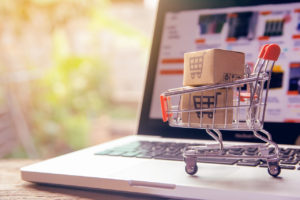What is leasing based on?
In the simplest terms, leasing is a situation in which one party to the contract (the lessor) buys an object to then give it to the other party (the lessee) for use. The condition for using the item is regular payment of installments.
At the end of the contract, the lessee can exercise the option to buy back the item to become its owner. However, this is not mandatory – moreover, lessors often offer those using their services the opportunity to lease another item at a discount in exchange for giving up the buyout option.
In this way, customers – staying on the topic of cars – can replace the vehicle with a new one every few years, still paying installments, of course, as well as the cost of initial fees.
In Poland, we use two types of leasing – these are operating leases and finance leases. Long-term rental, which in principle is not leasing, but in many ways resembles this service, is also quite popular.
What can be leased?
There is no closed catalog of goods that can be leased – so in theory you can lease almost anything. However, practice shows that the most common uses of financing are for vehicles (67.6%) and machinery and equipment (28.4%). It is far less common to use leasing to purchase computer hardware and software (1.22%), means of transportation other than vehicles (1.22%) or real estate (0.7%).
The above figures are for 2022. They come from the statistics of the Polish Leasing Association and are available at this link.
Important!
Although entrepreneurs usually opt for new vehicles and equipment, it is also possible to lease a used item, such as a car that is several years old.
Leasing of a means of transport
If a company needs a vehicle, it can lease more than just a car or van. Entrepreneurs are successfully leasing trucks, trailers and even buses.
The same applies to other means of transportation – no one will be surprised by the leasing of a boat or an airplane, although there are certainly fewer entities offering such a service than in the case of cars.
Leasing of machinery and equipment
Not for every company a vehicle is the first need. Many companies, such as those in the food service sector, are looking to finance the machinery or equipment they need for their daily operations. Barista machines, industrial refrigerators, heating display cases or catering furniture – any of these things can be leased without any problems.
Real estate leasing
Leasing real estate is slightly different. The cost of such leases is much higher, and the average contract term is longer. Leasing a passenger car usually lasts from 3 to 5 years, while leasing real estate generally extends to 10 to 15 years, and sometimes even more. For this reason, it is rarely profitable to finance real estate in this way… for either party.
The lessor must make sure that the object of the contract (the property) does not lose value, and is most likely to work with an established company. A small entrepreneur with no leasing or credit history is quite a risk for lessors.
The lessee, on the other hand, has to reckon with the higher cost of spreading the payments over several years, and the need to pay an upfront fee, the amount of which may be similar to the mortgage contribution for a property of similar value. On the other hand, however, a sizable portion of the fees will be able to be included in tax deductible expenses – we are talking not only about the leasing installment, but also the fees for operating the property, as long as its use is in line with the company’s goals.
Leasing costs
One of the most frequently asked questions about leasing is: “how much does it actually cost?”. Of course, a lot depends on the lessor’s current offer, but it’s a good idea to prepare in advance and find out what costs you need to take into account when using a lease.
Initial fee
Often the key factor in deciding on a particular leasing offer is the amount of the initial rent. This one represents a fraction of the value of the leased product. A high down payment usually results in lower installments over the life of the contract. As a rule, lessors offer a contract with an initial fee of 10-40% of the value of the object.
It’s relatively easy to come across an offer with no up-front payment – but expect to pay a noticeably higher overall leasing cost.
Insurance of the object of the contract
Any vehicle is legally required to have liability insurance, but when the vehicle is leased, it is necessary to purchase AC insurance as well.
Machinery, equipment, as well as leased real estate and any other item that is the subject of a lease agreement must also be insured – this cost is charged to the lessee. Machinery and equipment should be insured, among other things. From damage and theft.
It is worth mentioning that it is possible to include the cost of insurance in the lease installment, thus spreading it over time.
Important!
Lessors often offer customers to use the services of insurance companies that work with them. This is important, because contracts are sometimes subject to additional conditions – for example, choosing a different insurer (found on your own) may result in an additional handling fee.
In extreme cases, it happens that the lessor completely blocks the possibility of self-selection of insurance.
Remember that the leased item must be insured for the entire term of the lease agreement. This is especially important at the end of the contract – if you decide to lease an item for a period of 36, 48 or 60 months, there is a good chance that you will have to buy new insurance in the last month of the contract – this can expose your company to additional costs.
Other lease costs
It is worth remembering that a new vehicle purchased by the lessor with the customer in mind must be registered, and the cost of registration with the authority is also borne by the lessee.
Another expense to consider is the appraisal service performed by an appraiser. However, this only applies when an entrepreneur leases a used item.
If the lessee decides to buy back the leased object, he must also pay the buy-back amount – this can be as low as 1%, but often fluctuates between 10-20%.
Types of leasing
In Poland, entrepreneurs can use two types of leasing – operating and financial. What is the difference between the two options?
Operating leases
This is a variant in which the lessor remains the owner of the leased object, and it is this institution that retains the right to make depreciation deductions. The lessee, on the other hand, can deduct most of the expenses it incurs in connection with the subject matter of the contract:
- monthly installments,
- initial fee,
- Fuel costs (in the case of cars),
- The cost of repairing and replacing parts,
- review costs,
- The cost of purchasing additional equipment.
At the end of the operating lease, the entrepreneur can buy back the object of the contract by paying the agreed buy-back amount.
Financial Leasing
When choosing a finance lease, the lessee counts the object of the contract as a fixed asset of his company – so he can make depreciation deductions. In this option, however, the entrepreneur cannot include the entire installment in deductible expenses, but only the interest portion.
What’s more, finance leases require the lessee to pay VAT on the object in full, up front. With a finance lease, you don’t have to worry about the buyout amount – when the last installment is paid, the object becomes the property of the lessor automatically.
If you want to learn more about what differences exist between operating leases and finance leases, read our article!



